The UN Office on Drugs and Crime (UNODC) in its latest Afghanistan Opium Survey 2014 suggests that poppy cultivation in Afghanistan has hit an all-time high in 2014. It was estimated at 224,000 hectares in 2014, a 7% increase from the previous year, surpassing the previous high of 209,000 hectares of poppy in 2013.
The international community is concerned about prospects of its impact on future funding of the Taliban, as the Afghans are growing more poppy today than at any point of time in modern history. The survey identified a clear link between insecurity and the rise in the opium cultivation, as the vast majority (89 per cent) of the opium cultivation is taking place in nine Afghan provinces in the southern and western regions, the most insecure in the country. The Chief of Special Inspector General of Afghanistan Reconstruction (SIGAR) John Spoko underlined that the narcotics trade not only poisons the Afghan financial sector and undermines the Afghan state's legitimacy by stoking corruption, but is also providing significant financial support to the Taliban.
The course of any insurgent movement is contingent upon a number of elements-primarily, the organisational strength, leadership and most importantly finance, besides ideology. At one level, all these factors are inseparably interlinked and determine the success or failure of the movement. The Taliban insurgency is one such movement posing a direct threat to the national security of Afghanistan. And the role of poppy cultivation and opium production in financing and sustaining Taliban insurgent movement in Afghanistan, cannot be ignored.
The insurgency and the opium economy
The Taliban movement in Afghanistan had never been short of sources of fund to budget its insurgency. These include donations from charities and individuals from Gulf States, Hawala networks, extortion, protection money from convoys seeking to resupply international forces in Afghanistan, smuggling of goods, and various other illicit activities like kidnapping. However, income from narcotics production and trafficking is the one of the biggest fund raising source for Taliban.
In 2000-2001, the Taliban had declared poppy cultivation illegal. Counter-narcotics expert Vanda Felbab-Brown explicates it as an attempt to appease the international community, to buy recognition as a legitimate government, boost opium prices, and possibly also consolidate its control over Afghanistan's drug trade. Since 2001, when Taliban government was ousted from power; Taliban promoted poppy cultivation and started levying a ‘tax’ on opium farmers. The income generation sources of Taliban are: money lending and charges on opium farmers, lab processing and trafficking and charges on protection and drugs transportation.
The highest poppy cultivating provinces in Afghanistan in recent years- Helmand, Kandahar, Farah, Nimroz and Uruzgan - are Taliban strongholds and also records high insurrectionary incidents. In these provinces, Taliban backed financiers provide money to the farmers to grow Poppy plants and, in turn, collect the harvest in many of the poppy growing Taliban provinces of influence. Gretchen Peter’s paper on How Opium Profits Taliban, points out to how the Taliban in rural areas collect Opium in exchange of commodities. They maintain warehouses where opium can be stored and withdrawn. Such warehouses, again, play an important role in hoarding and stockpiling opium in case there is excessive global demand for opium; by curtailing supply, they force the opium market to increase price, therefore collecting higher profit on opium supply. The Taliban don’t only collect tax on crop, but also collect protection charges from farmers to protect them from anti narcotics eradication programme.
The other source of income for Taliban is charging lab processing charges on many of the traffickers and processors in areas close to Pakistan and Iran. Many of the Taliban themselves operate processing business, collecting huge profit from the heroin processing units. The trafficking of large amount of opium along various porous boundaries of Afghanistan and neighboring countries needs armed escort services from Taliban.
In many of the areas, the corrupt government officials, intelligence, Taliban and traffickers facilitate drugs convoys. Everyone has their own share of benefits, as drug trafficking is the most important and cash rich activity in the whole series of opium economy. The Taliban are also paid in with other commodities like satellite phone, vans and bikes, which in turn is used by the Taliban insurgents in various attacks on State forces. As bulk of the opium are grown and processed in southern Afghanistan, smuggling and trafficking too begins from these areas. There are basically some fixed routes of trafficking of opium and heroin, which is smuggled through countries like Iran, Pakistan and various central Asian countries to markets in Europe and Russia.
The Future Scenario
Afghanistan is going through a complicated security and economic transition. The complete pullout of international forces and decline in aid is likely to produce a massive economic constriction inside the country that could further increase both economic and political instability. The U.N. has warned that the legal economy will continue to contract next year as foreign aid money continues to decrease, and that could motivate farmers to continue cultivating opium. Therefore, given the gloomy prospect for the legal economy, the lure of opium money will continue to boost opium economy.
The Counternarcotics Police of Afghanistan (CNPA) was established in 2003 as a special force element of the Afghan National Police (ANP) responsible for counternarcotics operations throughout Afghanistan. It is still in its nascent stage and lacks skills, motivation and resources to fight anti-state elements. Further, the forces are hampered by lack of fund, infrastructure and training, and are finding it hard to tackle opium production at provincial and local level.
Earlier, CNPA was working closely under the guidance of U.S. government institutions—Department of State (State), Department of Defense (DOD), and Department of Justice’s (DOJ) Drug Enforcement Administration (DEA). The drawdown of military personnel will also lead to scaling down of the civilian law enforcement officials which in turn will jeopardize the counternarcotics effort. It is expected that Taliban will witness organisational expansion and increase in numeric strength in the wake of coalition forces’ drawdown. It will try to regenerate its capacities and capabilities. The Taliban are likely to try to keep military pressure in rural areas, both in the provinces close to Pakistan border and also expand their control and influence in areas vacated by coalition forces. This will require huge amount of funding and financial capacity. Chances are that the Taliban will take advantage of the potential economic and security instability to generate maximum revenue from opium economy, further worsening the security condition.
Terrorism, narcotics and the instability are the elements that are chained up together in Afghanistan. For transforming Afghanistan from a nation in conflict to a nation in peace, the new government must accord top priority to counter-narcotics in the next few years. The onus of responsibility should equally be shared by the international community, as opium from Afghanistan is no longer a threat to the region, but has acquired international dimension. An unstable Afghanistan is a threat to global security and as such the problem needs engagement of various international governments and institutions.
(The author is an independent strategic analyst)
Published Date: 18th December 2014, Image source: http://jafrianews.files.wordpress.com
(Disclaimer: The views and opinions expressed in this article are those of the author and do not necessarily reflect the official policy or position of the Vivekananda International Foundation)

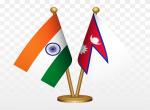
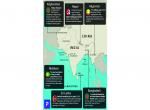
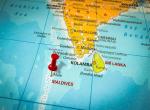


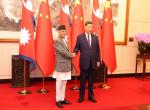
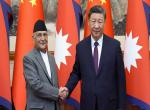

Post new comment